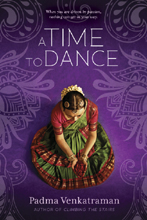No, that isn’t a spelling mistake. Next time you’re out walking through the woods (or running along city streets), try walking through the “‘woulds”’ with your character. Wondering what that means?
Let me start by sharing a fact. I was an oceanographer before I became an author. So I read a lot of novels, but not a lot of how-to-write-a-novel books. None, in fact. I began to read them after I was published, when I was invited to speak about writing. I wanted to help other aspiring writers, but I was somewhat shocked when I came across a suggestion about getting close to your character by “listing what’s in your character’s wardrobe/wallet/pocket.”

My debut novel, Climbing the Stairs, features a character who grows up in India in the 1940’s. My second novel, Island’s End, features a protagonist who lives in a rainforest on the remote Andaman Islands and whose tribe’s lifestyle hasn’t changed much over the past 3,000 years. Neither of them has a wardrobe or a wallet or a pocket.
Most of the exercises I came across were just not applicable to my work. Yet, I’d completed two successful novels, despite many demands on my time – a new baby, a new home, my work at the university, volunteer work.
Obviously, I had ways to engage with my characters that I’d been indulging in, unconsciously or subconsciously. One of those ways, I realized, was getting in touch with my characters even when I wasn’t at my computer. When I was walking on my own, for instance.
Or rather, walking with and later within my characters.
When a story captures my soul, I start by imagining I’m walking through my character’s world. I breathe the air she breathes, I pay attention to the details of where she goes and what she sees there. I ask what sounds and sights she wakes up to each morning. I visit the library and the Internet to conduct research so I can spend time in her world. My novel is a movie I’m watching.
 Soon, my character is my imaginary friend. She walks beside me and lets me ask her questions, constantly. If I’m irritated by a particular person one day, I ask, “Would you be irritated by this person, too?” I interview her in my head, asking what she would say, feel, and do if she were in the situations I face each day. I make up dialogue (even and especially when I don’t have a pen handy), act out scenes (hoping the neighbors aren’t looking in through the windows), and spend time chatting with her (my family is used to hearing me talk to “myself”). Now, my novel is a radio station, constantly playing in my head.
Soon, my character is my imaginary friend. She walks beside me and lets me ask her questions, constantly. If I’m irritated by a particular person one day, I ask, “Would you be irritated by this person, too?” I interview her in my head, asking what she would say, feel, and do if she were in the situations I face each day. I make up dialogue (even and especially when I don’t have a pen handy), act out scenes (hoping the neighbors aren’t looking in through the windows), and spend time chatting with her (my family is used to hearing me talk to “myself”). Now, my novel is a radio station, constantly playing in my head.
The third stage is when I enter my character’s body and mind. I start to see how she would express herself. I listen to her speech and her unvoiced thoughts. I allow her to take over, allow her voice to infuse my mind, allow her senses to guide me, allow her perceptions to fill me. I try to get into her skin. When I wrote Climbing the Stairs, I wore saris, to feel both the beauty of the fabric and the restrictions of doing everyday chores wearing skirts that swished around my ankles. When I wrote A Time to Dance, I used crutches and tied up my leg to better glimpse what it would be like to lose a limb, the way a method actor might try to get into character. My character haunts me.
Finally, my character takes over my soul like a ghost. I learn why she acts and thinks and speaks and moves the way she does. I feel her body language. I sense her emotions and passions. I dream her dreams. Her reality becomes mine. My character possesses me.
So, yes, go ahead and write lists of what’s in your character’s wardrobe or whatever. But more importantly, wonder and daydream about walking through your character’s world and working your way into your character’s body and heart and soul. Transfer incidents out of your day into your character’s day. These situations that may never play a part in your novel, but they’ll help you understand your characters better.
Start with the question of what your character would see and where your character lives, and then, as she/he faces different scenarios in your novel, ask how your character would feel, speak, act or react; and, most importantly, why your character does whatever what she/he does at that point in time. Walking through these “woulds” will help bring alive your character’s emotional journey and growth, so your readers can see through your character’s eyes, breathe your character’s breath, and inhabit your character’s soul. Solvitur ambulando.







